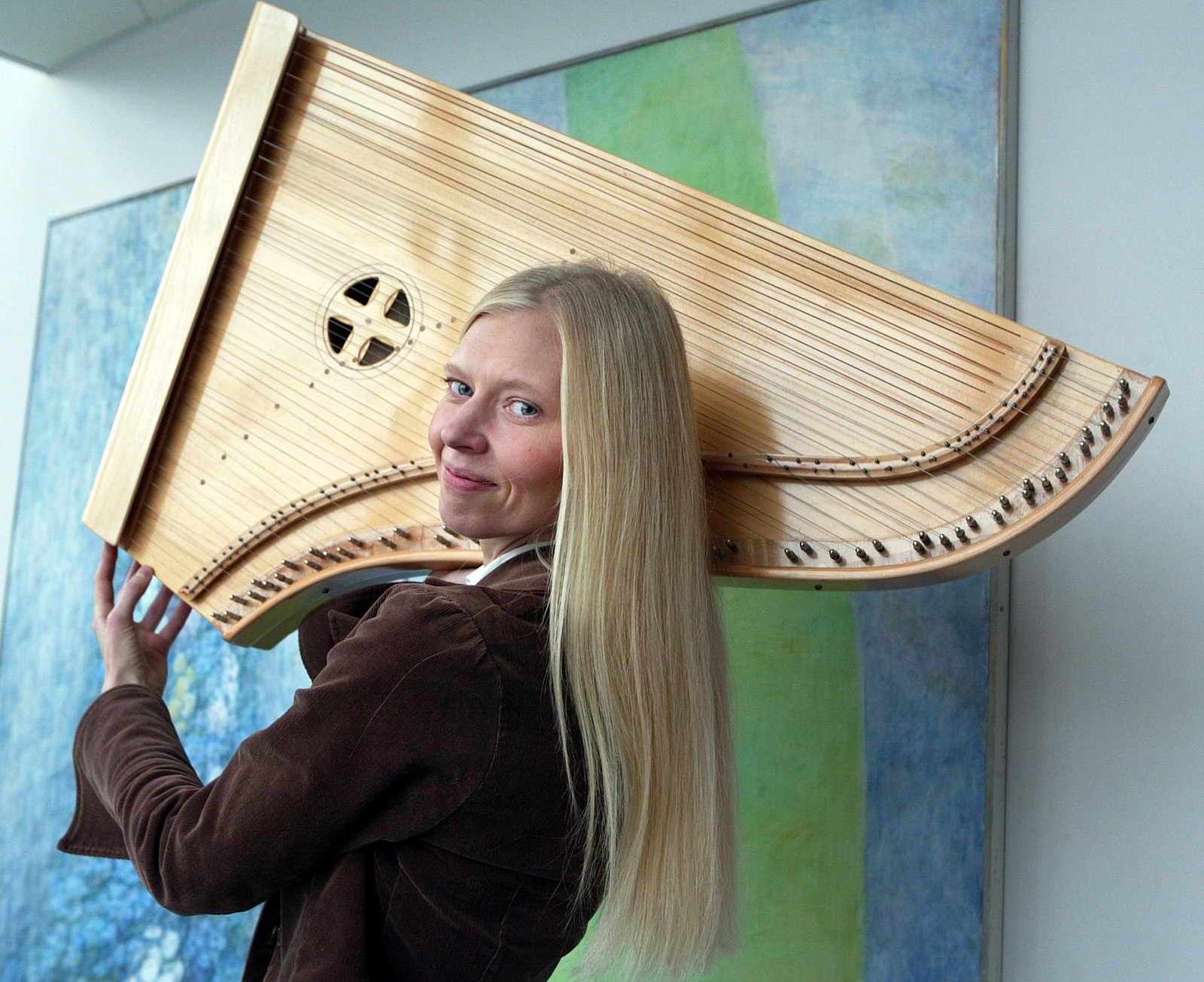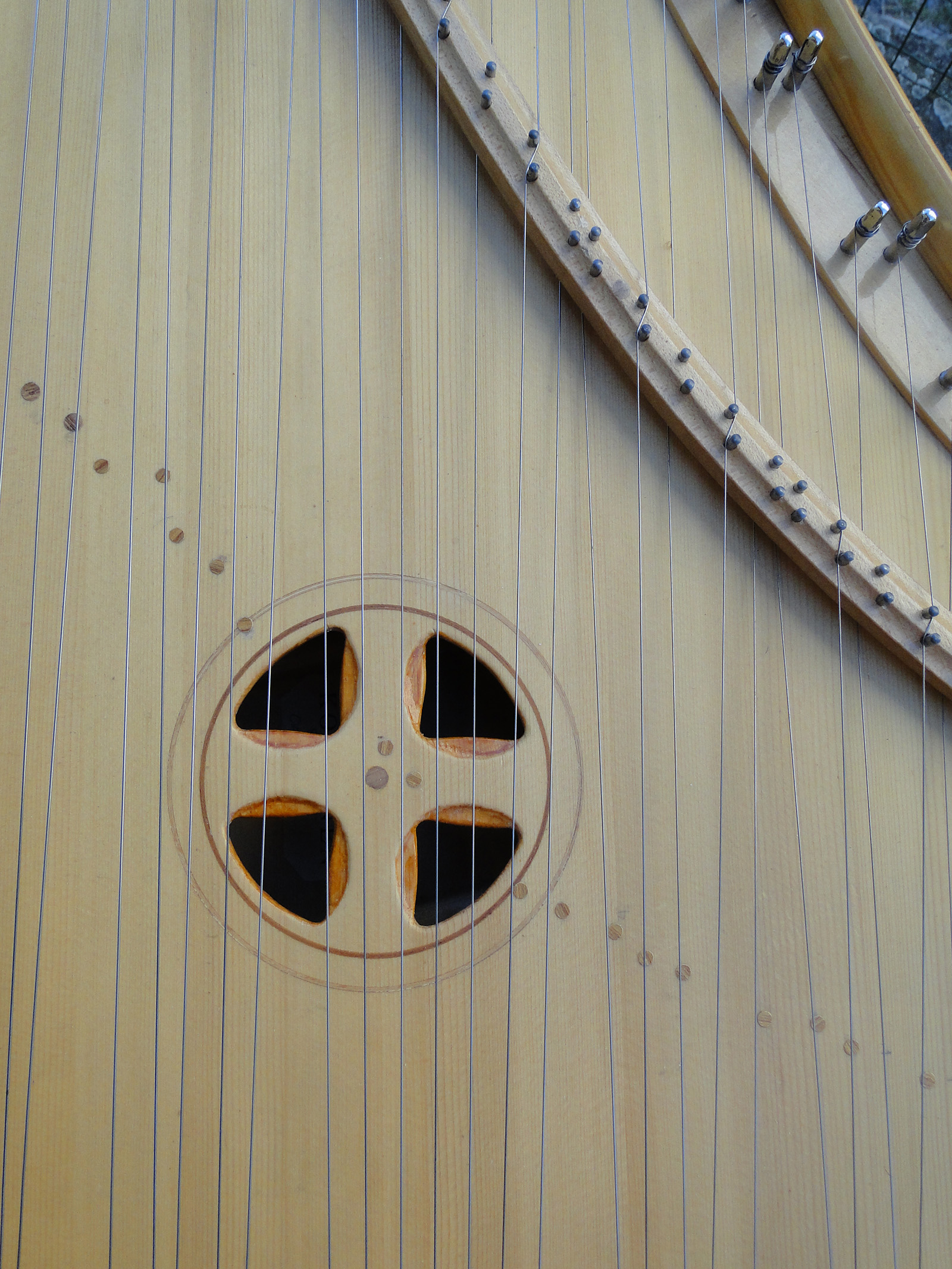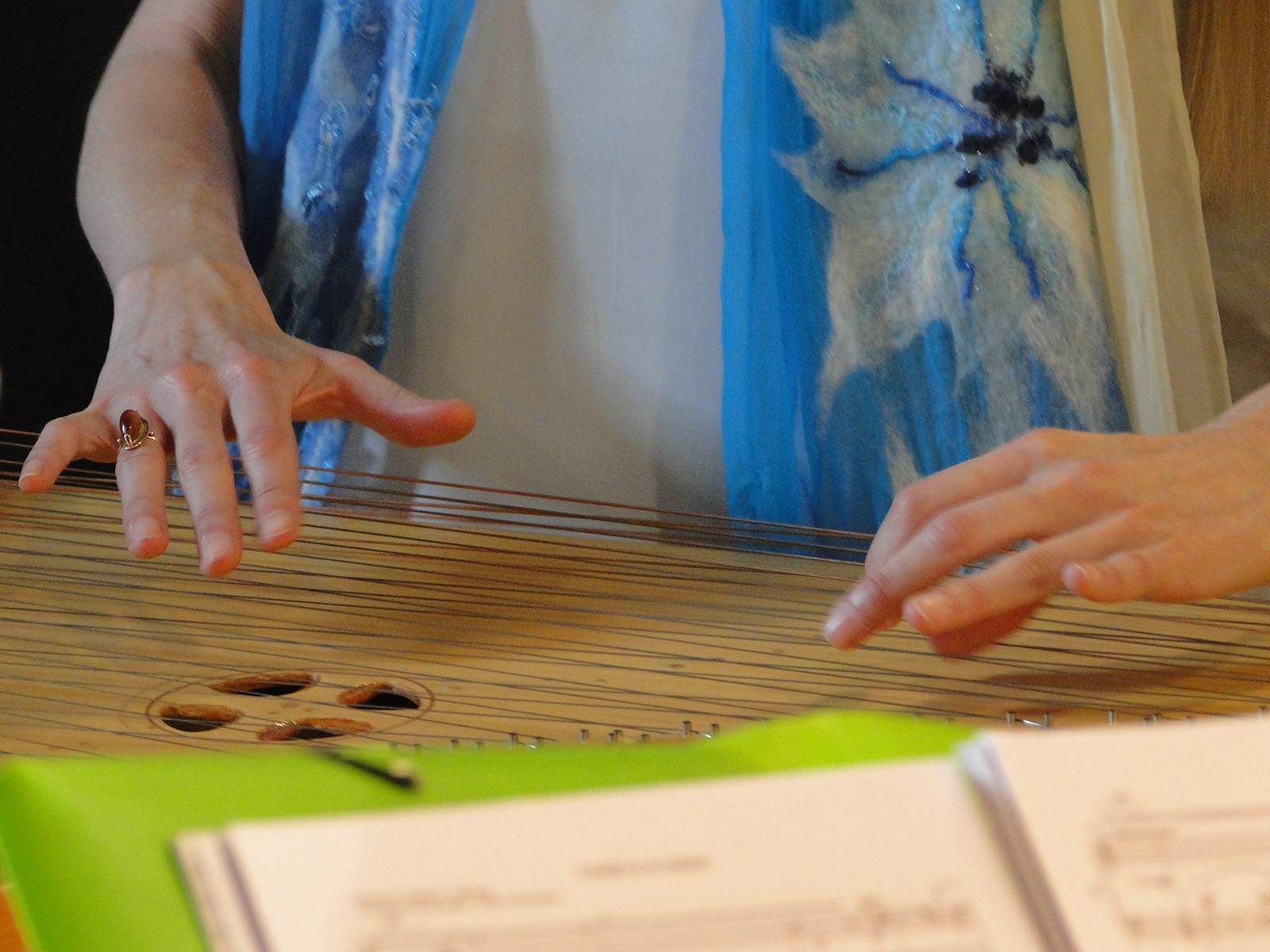A type of kannel developed in the 1950s by instrument builder Väino Maala (1914–1987). Due to its unlimited chromatic possibilities, this instrument type is used in several different music styles.
History and development
The kannel is an ancient Estonian national instrument with a history spanning over two millennia. The archaic kannel was an instrument with 6–7 strings that was carved from a single piece of wood; with time, the number of strings grew and the instrument became larger. In the 19th and 20th centuries, diatonic kannels of various shapes and sizes were played across villages. Gradually, however, the need for a kannel that could also be played in different keys emerged. In the first half of the 20th century, several attempts were made to construct a chromatic kannel, but mostly these remained mere experiments and failed to gain larger popularity among instrument players.
In 1952, an instrument builder from Valga County, Väino Maala, crafted the contemporary chromatic kannel. The birth of this instrument type was also facilitated by the initiation of kannel studies in Estonian music schools in the 1950s, which created the need for an efficient kannel type. Eik Toivi (1903–1993), a teacher from the Tallinn Music School, advised Väino Maala in the elaboration process of the chromatic kannel. His new instrument was embraced by kannel players and it was taken into use in Estonian music schools. Today, chromatic kannel is taught in several music schools across Estonia and, since 2002, as a specialty at the Estonian Academy of Music and Theatre.
String system and playing technique
The chromatic kannel has a separate string for each chromatic pitch. This enables the usage of all pitches in all keys without limitations, similarly to the piano. Number of strings mostly 46 (range c-–a3) or 50 (range Gis–a3).
The chromatic kannel is a cross-strung instrument
On one side, the set of strings with diatonic pitches is 1.5 cm higher than the pentatonic pitches, and vice versa on the other side of the instrument. In the middle of the instrument the strings are on the same level. This is the area that is typically used to play the instrument.
The kannel is played with fingers, usually with the soft pad of the finger. The fingers are slightly bent. All fingers on both hands are used equally, except for the fifth, i.e. the little finger, which most instrument players use rarely. Up to 4-tone chords reaching one octave can be played with one hand. All playing techniques can be used – legato, staccato, portato, etc. Damping is crucial in kannel playing, as the reverberation of the kannel is long. In contemporary art music, extended performance techniques such as producing sounds with various objects, special tunings, etc. are used.
Materials and construction of the instrument
Different types of wood are used in the construction of a kannel: the sound board and the bottom of the sound box are made from coniferous trees, the sides from various deciduous trees. The strings and turning pins of the kannel are made of metal. The bridge on the sound board amplifies the sound. The kannel stands on three legs that are usually screwed to the body. The instrument is mostly played sitting.
The Tallinn Piano Factory started building chromatic kannels in 1953 and their production continued with interruptions until the mid-1990s, when the piano factory was privatised and kannel manufacturing was terminated. Since then, chromatic kannels have been crafted by small entrepreneurs.
Repertoire
The chromatic kannel can be used to perform classical, folk and pop music. With its unique sound and performance opportunities, this instrument has gained the interest of many Estonian and foreign composers. Original music for the kannel has been composed by Gennadi Taniel, Lembit Veevo, Ants Sõber, Mirjam Tally, Helena Tulve, Malle Maltis, Liis Viira, etc. Early and Baroque music is also very suitable for the kannel – J. S. Bach’s lute suites, for instance. Adaptations of compositions for other instruments (particularly the harp) may also be performed on this instrument. The kannel has also been used in jazz music.



